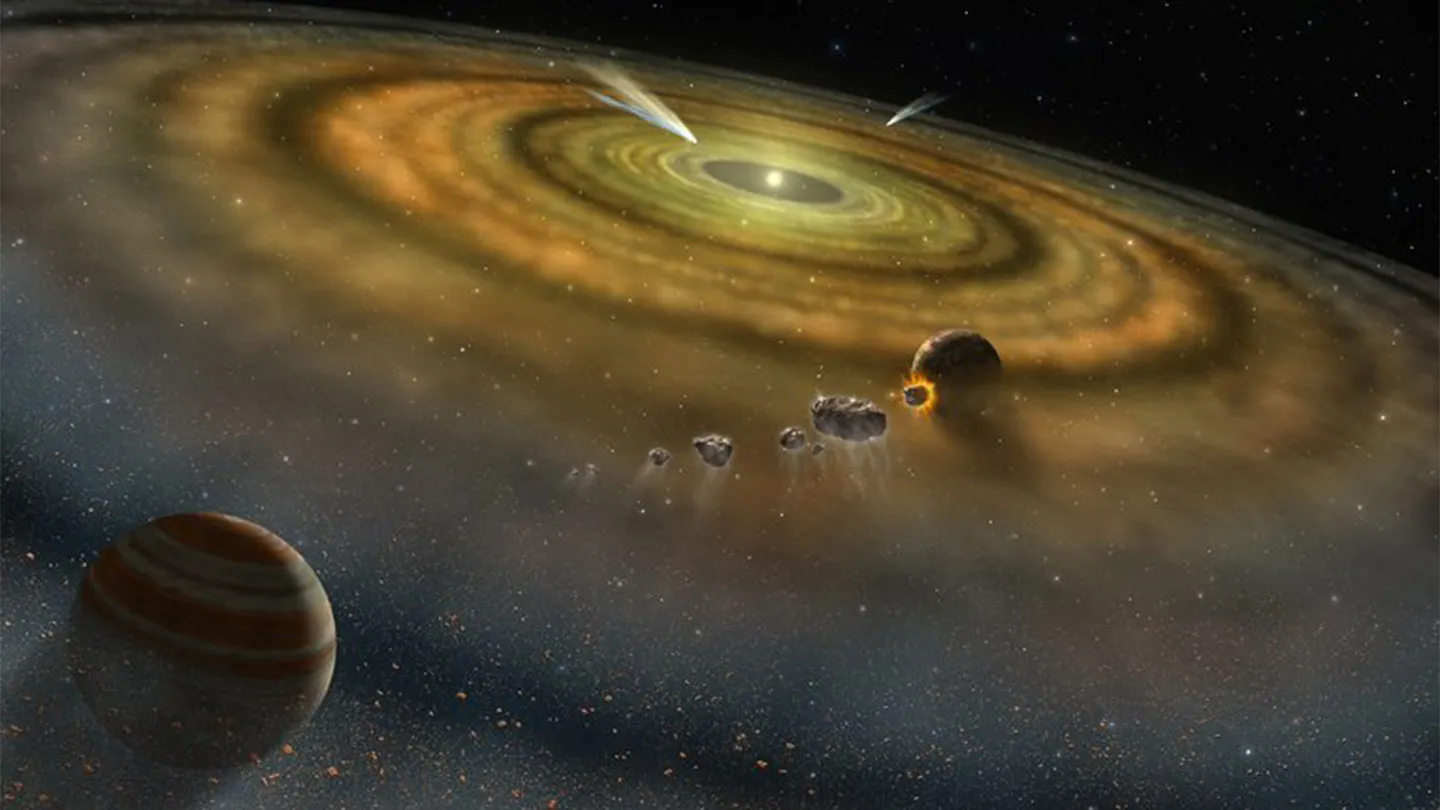preahvihearhotel.com – The birth of worlds, or planetary formation, is a complex and fascinating process that has been the subject of intense study and research. It is a fundamental aspect of astrophysics and planetary science, and understanding it helps us comprehend our place in the universe. The process of planetary formation is thought to occur in several stages, which can be broadly outlined as follows:
- Molecular Cloud Collapse: Stars and planetary systems form from dense regions in molecular clouds, which are vast, cold clouds of gas and dust in space. When a region of a molecular cloud reaches a critical size and density, it begins to collapse under its own gravity, triggered by events like nearby supernovae or collisions with other clouds.
- Protostar Formation: As the cloud collapses, it fragments into smaller clumps that can become stars. Conservation of angular momentum causes a flat, spinning disk to form around the protostar, known as a protoplanetary disk or circumstellar disk. This disk is composed of gas, dust, and ice, and it is the birthplace of planets.
- Planetesimal Formation: Within the protoplanetary disk, dust grains begin to stick together through electrostatic forces and collisions, forming larger bodies known as planetesimals. These are the building blocks of planets, ranging in size from a few meters to hundreds of kilometers.
- Accretion: Planetesimals collide and merge with each other in a process called accretion, growing in size. Over time, these bodies become protoplanets. The process is violent, with large impacts that can cause significant melting and differentiation (the separation of materials by density) within the growing bodies.
- Gas Giant Formation: In the outer parts of the disk, where it is cooler, gas giants like Jupiter and Saturn can form. They start with a solid core of rock and ice that grows large enough to attract and hold onto significant amounts of gas from the surrounding disk.
- Terrestrial Planet Formation: In the inner parts of the disk, where it is too warm for gas to be captured, terrestrial planets like Earth form. These planets are made mostly of rock and metal and grow through continued accretion of planetesimals.
- Late Heavy Bombardment: After the planets have formed, they may undergo a period of heavy bombardment by leftover planetesimals. This can lead to significant resurfacing and the formation of impact craters.
- Clearing the Disk: Eventually, the remaining gas and dust in the protoplanetary disk are either accreted onto the star, blown away by stellar winds, or pushed out by the radiation pressure from the star. This marks the end of the planetary formation process.
- Final Stages: The newly formed planets continue to cool and differentiate. Atmospheres can form through outgassing (volcanic activity releasing gases) or by capturing gases from the surrounding environment.
The timescale for planetary formation can vary, but it typically takes around 10 million to 100 million years for a planetary system to form. Observations of young stars and their surrounding protoplanetary disks, as well as computer simulations, have provided valuable insights into this process. The discovery of thousands of exoplanets (planets outside our solar system) has also shed light on the diversity of planetary systems and the different paths planetary formation can take.
